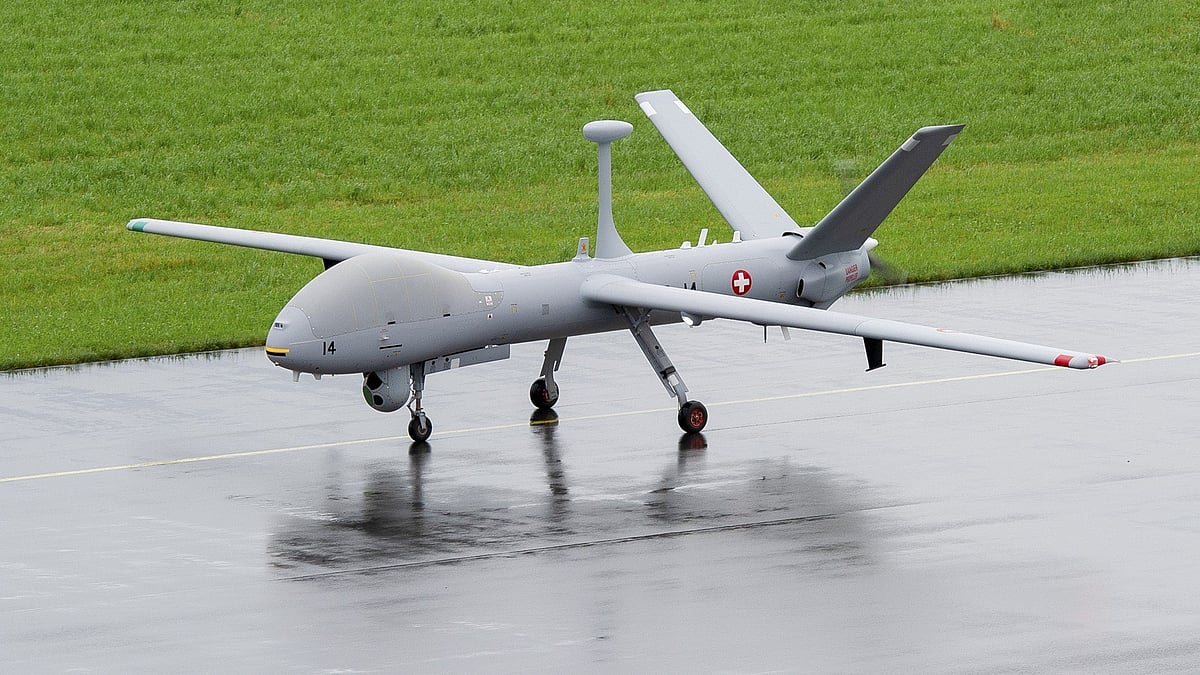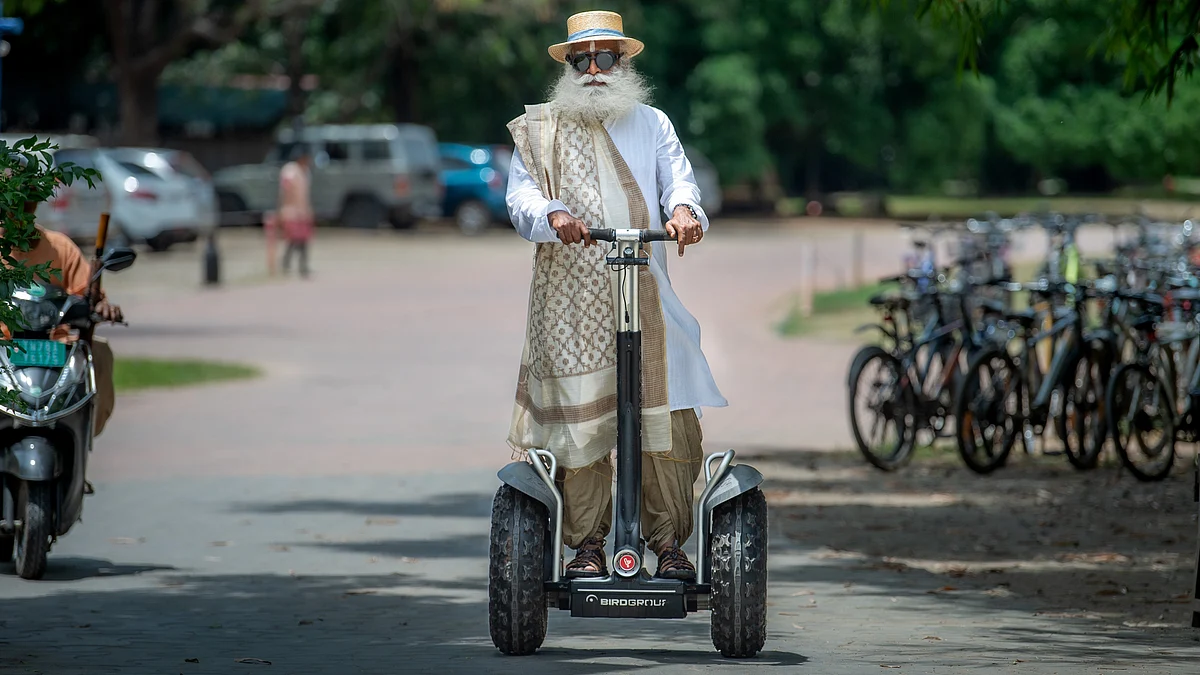On May 7 this year, India launched Operation Sindoor against Pakistan as retaliation for the April 22 terror attack in Pahalgam that killed 26 civilians. Operation Sindoor marked the first direct military confrontation between the nuclear-armed neighbours where Unmanned Aerial Systems (UAS) played a central role, indicating a paradigm shift toward drone-dominated warfare.
Over four days of heightened hostilities, both India and Pakistan rewrote their rules of engagement. The traditional battlefield moved from the ground to skies filled with drones — armed, autonomous, and relentless.
“Drones are playing the role of eyes in the sky. They are precision tools of strategy, capable of reshaping the battlefield without putting a single soldier in harm’s way,” said Capt A. Sinha (Retd).
Pre-Strike Push
In the 48 hours leading up to the operation, India reportedly deployed Israeli-made Heron MK-II and indigenous TAPAS-BH-201/Rustom-II Medium-Altitude Long-Endurance (MALE) drones deep into Pakistani airspace. Their mission was to collect electronic and signals intelligence and track thermal signatures of suspected terror camps.
Once Operation Sindoor began, the Indian Air Force (IAF) targeted nine sites within Pakistan. This was followed by sustained and escalated use of UAS — including surveillance drones, armed UAVs, loitering munitions, and decoy systems. These were deployed for strikes, real-time battlefield intelligence, electronic warfare, and radar spoofing.
India claimed it shot down over 600 Pakistani drones during the operation, also releasing footage and drone debris. Pakistan, meanwhile, alleged that 300–400 Indian drones attempted strikes on its military infrastructure, most of which were intercepted. India neither confirmed nor denied the numbers.


India’s Drones in Action
According to open-source intelligence and drone-tracking data, India fielded a diverse array of drones, including loitering munitions such as GPS-guided Nagastra-1 and Israeli Harop drones, which spearheaded precision strikes on enemy radar systems.
To overwhelm Pakistan’s air defences, India deployed swarm drone formations developed by the DRDO and private partners. These created radar clutter and baited premature surface-to-air missile (SAM) launches.
The sequence of attack began with electronic decoys and spoofing drones that saturated Pakistani radars. These were followed by precision strikes using loitering munitions and armed drones, all coordinated using ISR feeds from Heron MK-IIs and TAPAS drones. Micro-UAVs and quadcopters relayed live targeting data via the Army’s Integrated Battle Management System (IBMS), enabling agile and adaptive targeting.
Military analysts state that India’s extensive and calibrated drone strikes represented a new model of deterrence — one that is risk-free, algorithmic, and cost-efficient.
Pakistan Strikes Back
In response, Pakistan launched Operation Bunyan-um-Marsoos (Wall of Lead). Its armed forces deployed a formidable UAS lineup, including Shahpar-II MALE UAVs, Burraq armed drones, and foreign systems like Turkey’s Bayraktar TB2 and China’s CH-4 and Wing Loong II.
These were supported by loitering munitions such as the CH-901 and WS-43, targeting Indian radar outposts, logistics hubs, and forward-deployed command centres. However, India’s robust, layered air defence shield absorbed these attacks with minimal damage.
Major Indian military and urban hubs — including Jammu, Pathankot, Amritsar, Bikaner, and Bhuj — were in Pakistan’s crosshairs. But India’s multi-tiered air defence system, blending modern and legacy technologies with automation and real-time threat response, largely neutralised the threats.
Operation Sindoor was not merely a retaliatory strike — it was a tectonic shift in military doctrine. In a region long anchored in conventional warfare, this conflict marked the dawn of an era where machines lead, data decides, and human risk is minimised.
Introduction of Drones
Drones are now an essential part of every modern air force’s arsenal. The first known drone strike by a nation occurred in Afghanistan on October 7, 2001 — a Hellfire missile attack by a General Atomics MQ-1 Predator operated by the US CIA.
In India, drones gained attention after the drone attack on the Jammu Air Force Station, which served as a wake-up call for strengthening anti-drone capabilities. Regardless of India’s drone inventory, the attack highlighted the potential for maximum future damage. This led to a series of drone neutralisations along the border and a re-evaluation of counter-drone measures by the military.
The security establishment has since formulated a plan, procuring platforms to combat unmanned threats.
“The usage of drones in modern warfare has changed the nature of conflict. They extend our forces’ reach, enhance surveillance, and execute precision strikes efficiently. We saw that during Operation Sindoor,” said a serving officer involved in the operation.
India has rolled out a ₹300 crore short-term plan to acquire Counter-Unmanned Aircraft Systems (CUAS) for warfare. These systems offer both soft kill (jamming incoming drones) and hard kill (destroying drones directly).
Both the Indian Air Force and Navy have signed drone contracts with Indian companies. The Naval Anti-Drone System can detect and jam micro-drones using a laser-based kill mechanism. Available in mobile and static versions, this system will help secure Navy airfields and onshore installations.
Using radar, EO/IR sensors, and radio-frequency detectors, drones can be detected and neutralised effectively.
This system was first deployed for the Republic Day Parade in 2021, and later for the Prime Minister’s Independence Day address at the Red Fort.
.jpg)
Future of Warfare
Drones are now considered the ideal tools to breach borders without risking human life. They can hover at a distance, monitor targets around the clock, and provide real-time updates. For planned strikes, drones can study routes in advance to avoid collateral damage and strike with precision.
“Drones have empowered Indian Armed Forces to neutralise threats in real-time, gather critical intelligence from hostile terrains, and safeguard our personnel from direct exposure. We couldn’t have imagined this a decade ago,” added the on-duty officer.










